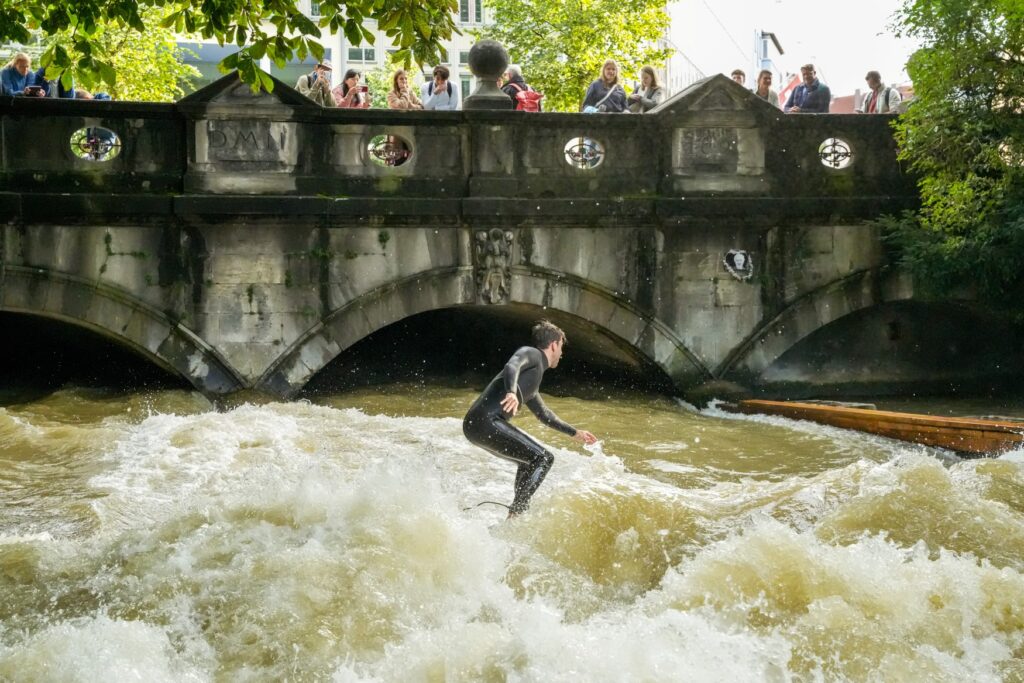Casual surfers plunging into the waves one after the other – right in the middle of the city. The Eisbach wave in Munich is one of the sporting highlights of the Bavarian metropolis. Or at least it used to be. After maintenance work in the fall, the famous standing wave in the Eisbach is no longer surfable for the time being. No one knows exactly why.
The image of surfers on the Eisbach wave is as much a part of summer in Munich as strolling through the English Garden and enjoying a cold beer. And even in the cooler seasons, many water sports enthusiasts did not shy away from plunging into the water under the Eisbach bridge. At least until the end of October 2025.
That’s when a so-called stream cleaning was scheduled to take place. Rivers and streams in Munich are lowered by the city so that municipal workers can remove trash and other blockages. One of the reasons for this was a tragic accident on the wave in April 2025, which resulted in the death of a 33-year-old surfer. A floodlight system was also installed at the Eisbach so that people could continue surfing the wave late into the night. At least, that was the idea.

The Wave is Gone
But when the inlet was reopened on October 31, there was great consternation. The wave was slow to build up again and was nowhere near its previous height. Surfing requires a level of at least 1.40 meters, but currently it is only 1.25 meters. After employees of the building department fine-tuned the inlet over the weekend at the request of the mayor (the wave is a matter for the boss!), the volume and level are now back to the required level. Nevertheless, the wave has not reappeared, replaced instead by a fast, smooth current. Long faces among the notorious wetsuit wearers.
There does not seem to be a single, clear reason for the absence of the wave. Whether too much gravel was excavated during the stream cleaning or whether a change in the stream bed was unintentionally caused elsewhere cannot be said at this point in time. There is discontent among Munich’s surfers, and the political party CSU has already submitted a request to the city council. It is to be expected that the city will also work hard to find a solution to the problem. The wave is too popular with Munich residents and surfers who come to the city especially for the wave.
The Eisbach wave was originally created when the fast-flowing water behind the Eisbach bridge first flowed into a depression. Then, as it rose, the stream met the slower water in the widening stream bed. A few boulders installed in the stream bed further enhanced this effect. This is how the wave formed. And hopefully it will soon flow as it did before. It would be a shame to lose one of the coolest spots in Munich.
👉 More information about the Eisbach wave can be found here on the Munich Tourism website.






